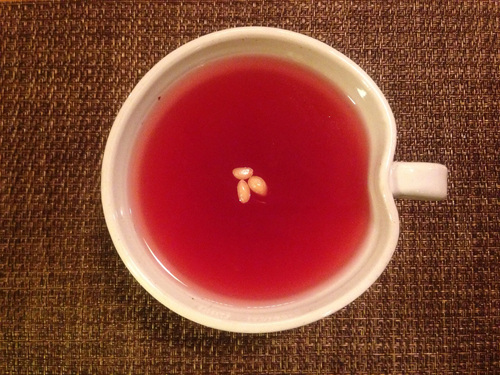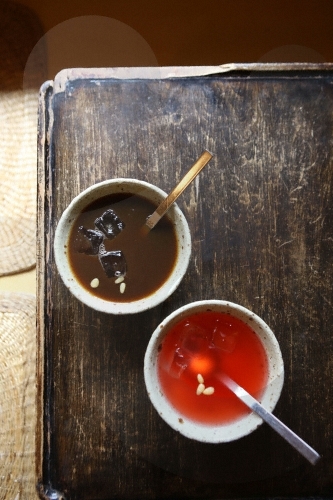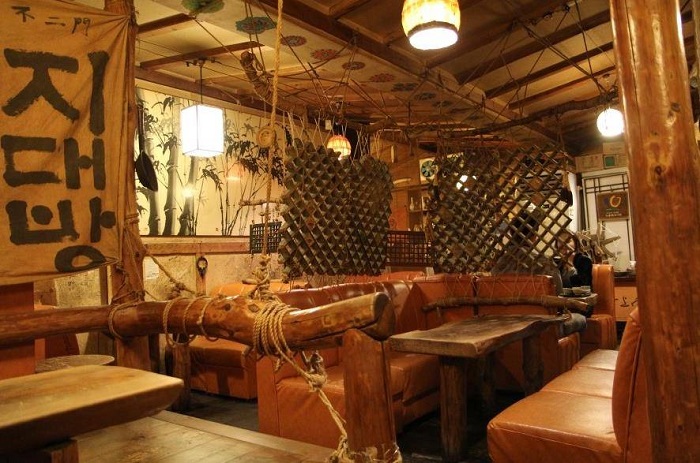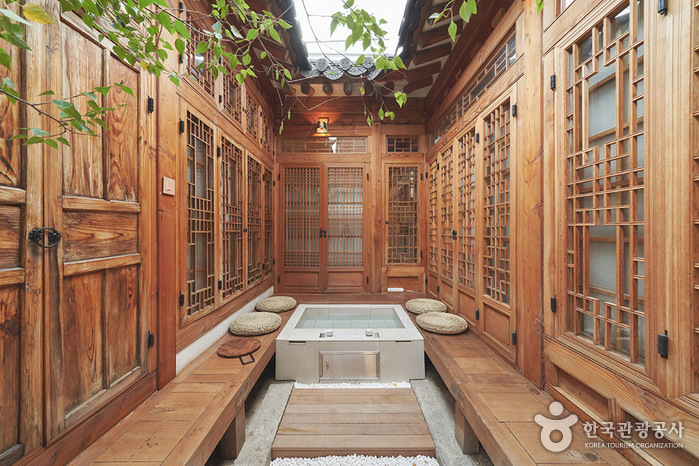Suyeonsanbang (수연산방)
1.5Km 2024-07-19
8, Seongbuk-ro 26-gil, Seongbuk-gu, Seoul
Suyeonsanbang, a traditional Korean tea house located in Seongbuk-dong, was originally the house where the late Korean author Lee Tae-Jun wrote many of his books. Now, his estate has opened Suyeonsanbang’s doors to the public in the form of a charming and peaceful tea house. Famous for its savory tea, beautiful nature, and rich history, Suyeonsanbang has been covered by a variety of foreign media outlets like NHK (Japan), BBC (UK), French TV channels, and numerous Japanese magazines. To take a break during the summer heat, visitors come to Suyeonsanbang to try their patbingsu (shaved ice with red beans), one of its summer specialties. So come relax and be inspired in this traditional Hanok tea house.
Calle de la Gastronomía de la Aldea Sejong (세종마을 음식문화거리)
1.5Km 2025-05-27
Chebu-dong 194-2, Jongno-gu, Seúl
Tteul Gwa Dawon (뜰과다원)
1.5Km 2019-11-12
6-4, Insadong 8-gil, Jongno-gu, Seoul
+82-2-734-5310
Tteul Gwa Dawon (literally "yard and tea garden") is an up-scale hanok-style tea
and coffee house where you can enjoy a tranquil garden in the center of Seoul.
The tea and coffee shop offers traditional Korean tea made of 100% natural ingredients, as well as organic coffee. It is equipped with large private rooms which can accomodate a large number of guests, making it the best place to hold seminars or other types of social gatherings.
Tea, rice cakes, and other traditional snacks served here can be a good alternative for when you're in between meals.
Yetchatjip (old teahouse) (옛찻집)
1.5Km 2019-12-20
33-1, Insadong-gil, Jongno-gu, Seoul
+82-2-722-5332
Yetchatjip is a famous teahouse that has also been used as a movie filming set. It is a great place to stop by for a cup of natural traditional Korean tea, or the traditional summer treat patbingsu, made with the old way with shaved ice and homemade red bean topping.
Insadong Chatjip (인사동찻집)
1.5Km 2025-06-24
33-1, Insadong-gil, Jongno-gu, Seoul
Insadong Chatjip is a hanok teahouse that serves home-made traditional tea. Even the red beans used in the summer delicacy patbingsu
Festival del Amanecer del Monte Inwangsan en Jongno-gu (종로구 인왕산 해맞이 축제)
1.5Km 2024-12-31
Cheongun-dong, Jongno-gu, Seúl.
02-2148-5002
** El festival ha sido cancelado. **
Jidaebang (지대방)
1.5Km 2021-03-29
33, Insadong-gil, Jongno-gu, Seoul
+82-2-738-5379
It is a traditional tea house where you can learn how to drink tea. This cafe is located in Jongno-gu, Seoul. The representative menu is chrysanthemum tea.
Nuwa [Korea Quality] / 누와 [한국관광 품질인증/Korea Quality]
1.5Km 2021-03-29
3-1, Pirundae-ro 5na-gil, Jongno-gu, Seoul
This hanok (traditional Korean house) is located deep in the Seochon Village, west of Seoul’s Gyeongbokgung Palace. Its tasteful renovation of a small 33 m2 hanok made it highly popular among the younger guests. The courtyard has a low maple tree and tastefully arranged stones, while the hanok is capable of accommodating up to 2 persons.
This L-shaped hanok has a full window wall facing the living room, which is furnished with a low walnut table and a bathtub. Visitors can enjoy premium tea at the table. The bathtub, which is connected to the table at one end, can be used mainly for a foot bath with bath salts that assist circulation. There is also a restroom in the building.
Nuwa’s bedroom has a circular window, much like the full moon, with a view of the garden and the fringes of the Inwangsan Mountain.
Of one book and stay / 일독일박
1.5Km 2025-08-11
11-1, Pirundae-ro 3-gil, Jongno-gu, Seoul
This hanok (traditional Korean house) is located in Seochon Village near Gyeongbokgung Palace. It is a modern C-shaped hanok centered around the inner courtyard, which is the first thing that the guests see after entering through the gate. While it is not expansive, white pebbles and a foot bath make this hanok a unique one. One can enjoy a foot bath while sitting on the porch.
The bedroom, which is located beyond the living room, is furnished with a queen-sized bed. Opening the screen doors brings one to the view of the kitchen area beyond the inner courtyard. A large table, plush sofa, and a small bookcase make the space ideal for books and discussions. Climbing the wooden ladder to the side of the kitchen brings one to the attic, which also doubles as a Korean-style room with a skylight. The kitchen is furnished with a refrigerator, microwave oven, gas stove, electric kettle, toaster, pots, utensils, wine glasses, and bottled water. There is a restroom with a bathtub. The standard occupancy of the house is 4 people.
Biblioteca Literaria Cheongun (청운문학도서관)
1.5Km 2023-08-17
Jahamun-ro 36-gil 40, Jongno-gu, Seúl




![Nuwa [Korea Quality] / 누와 [한국관광 품질인증/Korea Quality]](http://tong.visitkorea.or.kr/cms/resource/07/2707607_image2_1.jpg)

 Español
Español
 한국어
한국어 English
English 日本語
日本語 中文(简体)
中文(简体) Deutsch
Deutsch Français
Français Русский
Русский